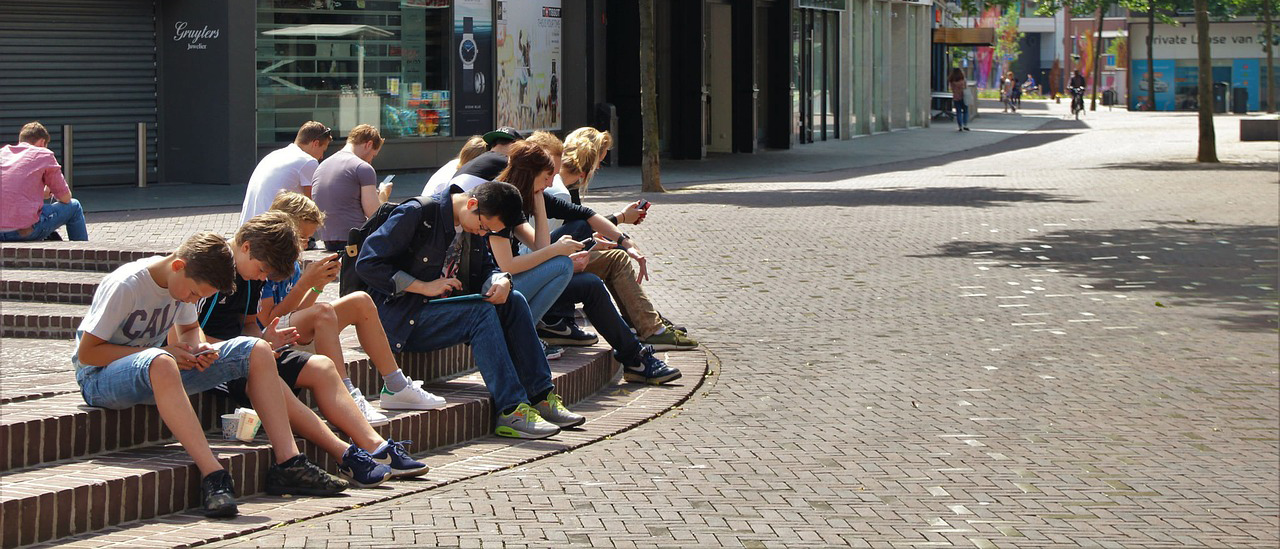Mannheim’s generational theory speaks not only of ‘the problem of generations’, but also how every generation is crafted by its own formative history. The current buzz generation are those Millennials, born roughly 1982-2002, seemingly the first truly digital students, even though evidence suggesting this group does not think of themselves as millennials. Like any generation that has preceded the Millennials, be it Generation X, the baby boomers, or the silent generation, what we can be sure of are predictions of the characteristics of the next
Lay wisdom sees millennials at ease in playing out their lives online, spending more than 6 hours online per day This group, who some see as apprehensive millennials brings differing generational reactions, veering from the harsh, such as how millennials are incapable of doing even the most basic household tasks to the more generous; this groups resilience to change, how they have come of age during a severe financial crisis, have been both the pioneers and guinea pigs of technological change, Writers like Mannheim, see how every generation has struggled to square who they wanted to be with the opportunities available. TV was initially accused of melting one generation’s brains, video nasties would addle another’s, and social media would fry the minds of the current generation.
This group like any other, is eager to learn as research from Manpower Group tells us – 93 percent see ongoing skills development as important in their future careers. Yet, the first part of the sentence “Millennials understand that the future of education is online…” is somewhat surprising, given recent surveys indicate that 78 percent of millennial students said it’s easier to learn in a traditional classroom than online, and only 39 percent said what’s coming down the road for education is more virtual delivery. Thus, generalizations about millennials learning somewhat chafes the premise that millennials are at ease with e-learning, despite of their thirst for learning
The casual observer could be forgiven for being under the illusion that millennials learning, specifically e-learning, passively occurs for millennials via the magic of the medium, in this case the web, and that creativity, or learning, by this medium, is a given, when in effect, the opposite is the case. Current wisdom goes that teaching Millennials doesn’t mean we need to “friend’ them on Facebook (although that might be an effective way of keeping in touch with them). Traditional lecture modes of instruction may not be dead, but require retooling in this age of limited attention spans and increased emphasis on student engagement Writing in the Chronicle of Higher Education, Scott Carlson noted, “A new generation of students has arrived — and sorry, but they might not want to hear you lecture for an hour” Picture in your mind’s eye a typical smart classroom or lecture hall. Dominating the space is the almighty screen. Now picture where the instructor is placed - usually to the side, behind a lectern. What implicit messages might the layout here convey to our students? That as well-educated projectionists, like the Wizard of Oz, instructors have become incidental to the learning process, where their role is to control the PowerPoint and video displays projected on the screen? Exaggerations aside, instructors must be mindful of the influence that subtleties have on millennials classroom experience and make the effort to get out from behind the lectern and become front and center in the learning process.
The changing demands placed on the educational system in late modernity, are also reflected in the shift from direct instruction to more constructivist approaches which propose that a creative model of online learning should allow for independent and community-centred learning, grounded in constructivism and in an online context, both students and teachers must assume roles that differ than those assumed in traditional educational paradigms. For example, the teacher should change from being an expert lecturer, especially in synchronous contexts, from having total control of the teaching environment to sharing with the student as a fellow learner, with learners taking control and making decisions with the support of a tutor Learners themselves.; the teacher should be the ‘guide on the side rather than sage on the stage’.
Self-determination theory based research shows that not only do students who utilize the Web and Internet technologies in their learning tend to score higher in the traditional student engagement measures, they also are more likely to make use of deeper stages of learning, and thus bring creativity, higher ordered thinking, reflective learning to their study.
This generation may not have the impressive lightbulb changing skills of previous generations, but that misses the point; these millennials are not that long with us, for a little further up the line, are the post-millennials in waiting and we should be looking for ways to embrace their skills rather than anticipate a skills deficit.

Rate and Review
Rate this article
Review this article
Log into OpenLearn to leave reviews and join in the conversation.
Article reviews